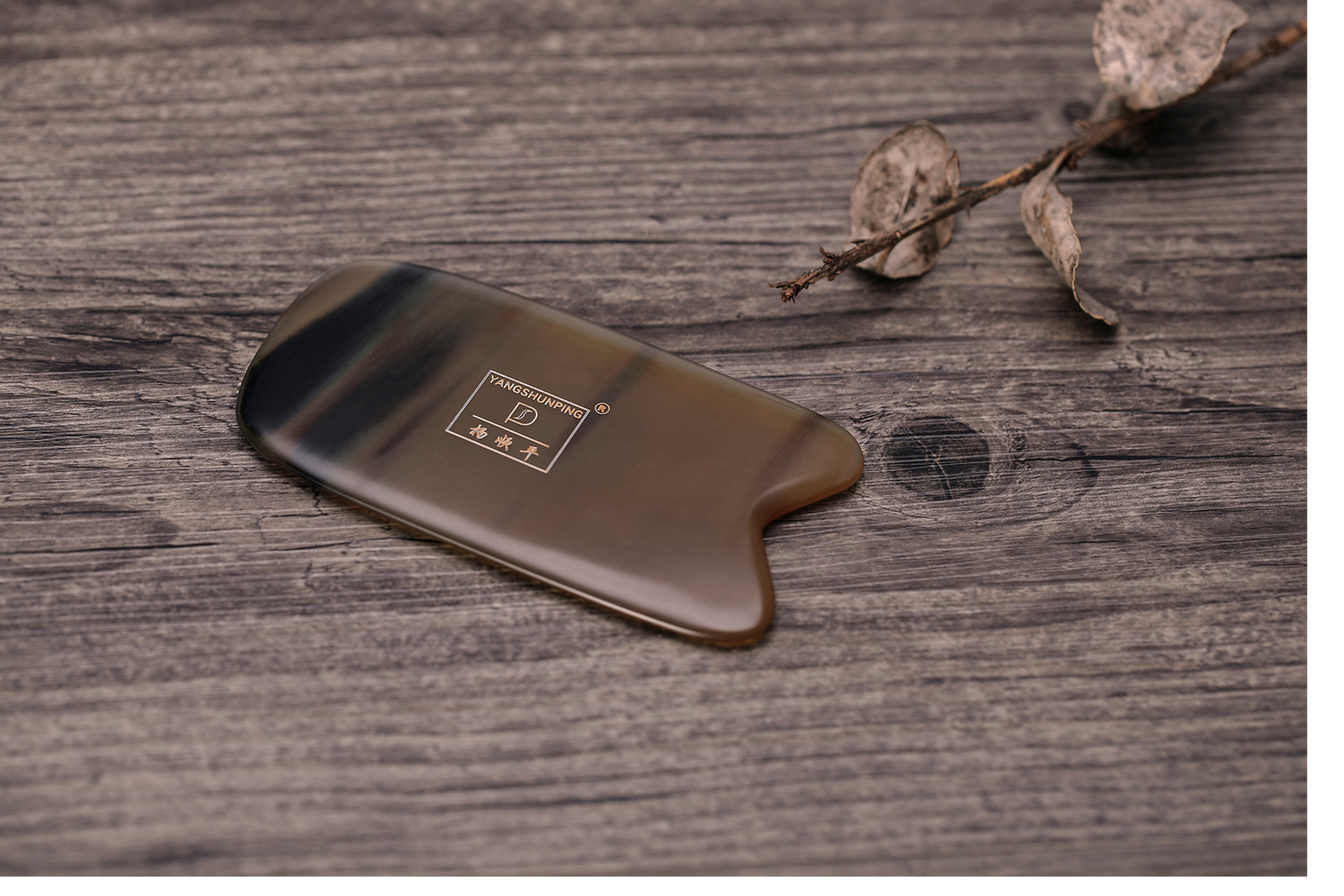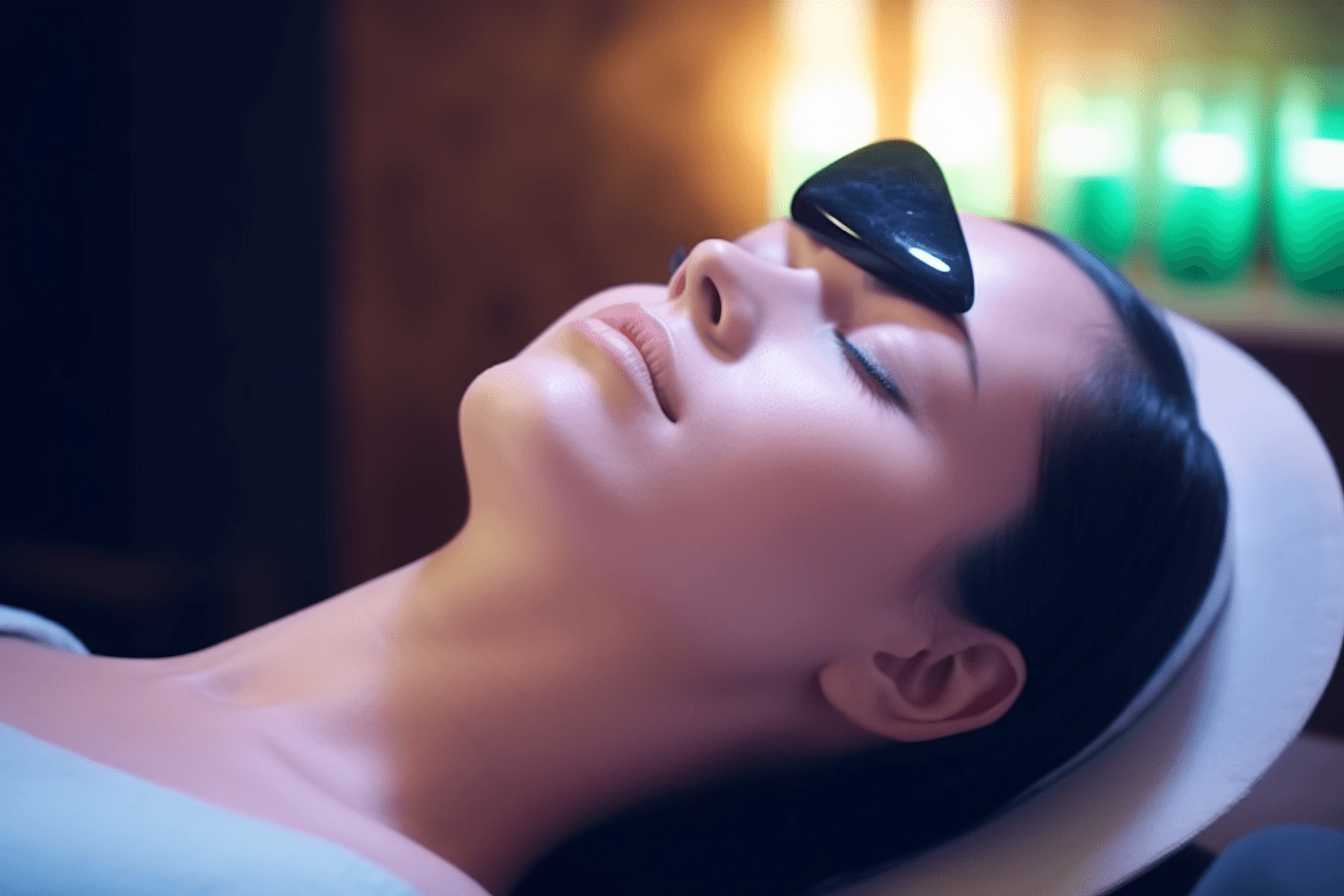Scraping therapy is a method that uses fingers or various smooth-edged tools dipped in a certain therapeutic scraping medium to repeatedly scrape, squeeze, pluck, prick, pinch, pat, and pick specific areas on the surface of the body. This causes the appearance of bruising, petechiae, or pinpoint bleeding, known as "sha", in order to achieve the purpose of treating and preventing diseases. This treatment method is simple to learn, the tools are simple, and the operation is convenient. It is widely used, safe, reliable, and has significant therapeutic effects. It has been passed down and applied in folk medicine and is highly welcomed by the general public.
Effects and methods of scraping
Scraping has the functions of promoting blood circulation, regulating yin and yang, eliminating toxins, and autohemolysis. When scraping, a scraping board (stone, pottery, hemp, coin, wooden board) and a lubricant (wintergreen ointment, sesame oil, egg white, onion ginger juice, white wine, peppermint water, talcum powder) are needed. The techniques include replenishing method, purging method, and balanced replenishing and purging method.
During scraping, the patient can adopt a supine position, prone position, lateral position, prone sitting position, or supine sitting position.
Specific methods include scraping, pinching, picking, and releasing. Scraping methods include direct scraping and indirect scraping. Pinching methods can be divided into tearing, pinching, squeezing, and grabbing, depending on the finger technique and strength. Picking involves using a needle to pierce the subcutaneous tissue at a certain area or acupoint on the body, breaking the fiber or squeezing out a drop of stagnant blood to treat diseases. Releasing methods include blood-letting and point-striking methods.
Precautions for scraping
Pay attention to keeping warm. In winter, avoid cold and drafts. In summer, avoid fans and avoid direct blowing on the scraped area.
The general principle for the order of scraping is to scrape the head and neck first, followed by the back and waist, then the chest and abdomen, and finally the limbs and joints. Generally, the yang meridians are scraped first, followed by the yin meridians. The left side of the body is usually scraped before the right side.
When scraping, do not scrape back and forth. In principle, scrape from top to bottom and from the inside to the outside. For the face, scrape from the inside to the outside; for the head, scrape from the top to the surroundings; for the neck, scrape from top to bottom; for the back and waist, scrape from top to bottom and from the inside to the outside; for the chest, scrape from the inside to the outside; for the abdomen, scrape from top to bottom; for the limbs, scrape from top to bottom. After scraping one area, scrape another area in a specific sequence.
When using purging method or balanced replenishing and purging method for scraping, there should be a time limit. The scraping time for each area is 3-5 minutes; the scraping time for each area using replenishing scraping technique is 5-10 minutes. Typically, for each patient, 3-5 areas should be selected for scraping. For patients who do not develop "sha" or develop less "sha", the appearance of petechiae or purpura on the skin is sufficient, and it is not necessary to forcefully induce "sha".
Consider the individual's constitution. For weak and elderly individuals, children, and patients who are particularly nervous or afraid of pain, the replenishing method should be used for scraping. Monitor the patient's complexion, facial expressions, and overall condition at all times to promptly detect and handle any unexpected situations.
For patients with severe conditions, deep lesions, but good constitution or patients with painful conditions, purging method or balanced replenishing and purging method should be used for scraping. For patients with mild conditions, shallow lesions, but poor constitution, the replenishing method should be used.
Before scraping the same area again, wait until the "sha" from the previous scraping has subsided. There should be a gap of 3-6 days between scraping sessions, with the subsiding of "sha" on the skin as the standard. Generally, 3-5 sessions constitute one course of treatment.
For muscular areas (such as the back, buttocks, chest, abdomen, limbs), the scraping board's flat surface (thin side or thick side) should be used for scraping. For areas with less muscle and more unevenness, such as joints, hands, feet, fingers, and the head and face, the scraping board's edges should be used for scraping.
Contraindications for scraping
1. Severe heart disease, renal failure, liver cirrhosis with ascites, and severe generalized edema are contraindications for scraping.
2. Avoid heavy scraping on areas where major blood vessels are visible. Use the edges of the scraping board to avoid blood vessels and use light pressure and tapping technique. For patients with varicose veins and lower limb edema, scrape from bottom to top using light pressure.
3. Avoid scraping on highly sensitive or diseased skin, such as on broken ulcers, abscesses, fresh or unhealed wounds, and fractured areas.
4. Avoid scraping on the abdomen, lumbar sacral area of pregnant women, and nipples of women.
5. Avoid scraping on the eyes, ear holes, nostrils, tongue, lips, front and back perineum, and the navel (Shenque acupoint).
6. Avoid scraping on individuals who are intoxicated, excessively hungry, overfull, excessively thirsty, or overly fatigued to prevent dizziness caused by scraping.
7. Avoid scraping on the head and neck of infants with open fontanels.
8. Be cautious when using heavy scraping on the lower abdomen of patients with urinary retention. Use light pressure and kneading instead.
9. Avoid taking a cold shower within 30 minutes after scraping.
In addition, after scraping, it is recommended to drink a glass of water to facilitate detoxification.




